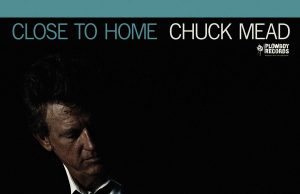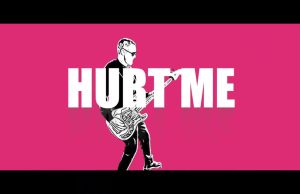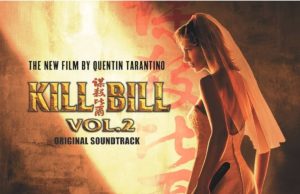 What songs come to mind when I say the names Bob Seger and Steve Miller? Old Time Rock & Roll and The Joker? Night Moves and Abracadabra? Against The Wind and Take The Money And Run? It’s probably some combination of those. These two artists are ones I love, but whose best-known work is nowhere to be found in my record collection. I appreciate that it’s great, but I really love their early work, which in both cases was dramatically different from their later, more popular material.
What songs come to mind when I say the names Bob Seger and Steve Miller? Old Time Rock & Roll and The Joker? Night Moves and Abracadabra? Against The Wind and Take The Money And Run? It’s probably some combination of those. These two artists are ones I love, but whose best-known work is nowhere to be found in my record collection. I appreciate that it’s great, but I really love their early work, which in both cases was dramatically different from their later, more popular material.
This got me thinking about musicians and bands who had distinct periods, where the material from one sounds like an entirely different act than the other. Some bands have more than two. Some rarely make two albums which sound alike (hello King Gizzard & The Lizard Wizard). But I’m interested in bands who needed to change their sound to find success.
We’ll start with The Steve Miller Band. Miller was born in Milwaukee, later moving to Dallas before returning to Milwaukee. His mom was a jazz singer and his dad was a jazz-loving physician who dabbled as a recording engineer — and had a good reputation as such. So Miller was exposed to music and musicians from an early age. He attended school in Denmark for a while, before dropping out and returning to the States to pursue music. He moved to Chicago to learn the blues and managed to start a successful group there with keyboardist Barry Goldberg. The Goldberg-Miller Blues Band even had a residency in New York City.
Eventually, Miller became disillusioned and returned to Texas with the intention of finishing his education. But the lure of playing music was too strong, so he drove a VW van all the way to San Francisco, spending his last $5 to get into a Paul Butterfield concert. That was it. He was hooked. Miller started The Steve Miller Blues Band there, and one of their first gigs was the Monterey Pop Festival. They are also the backing band playing with Chuck Berry on his 1967 album Live At The Fillmore Auditorium. Miller’s former Wisconsin classmate Boz Scaggs joined the band after this gig. Years earlier, Miller taught Scaggs to play guitar. The band got signed to Capitol Records and none other than Beatles producer George Martin suggested they shorten their name to Steve Miller Band.
The debut album Children Of The Future was recorded in London at Olympic Studio with the legendary Glyn Johns producing. This was around the same time as Johns was brought in by Martin to help with the Beatles sessions which would eventually spawn the Let It Be album. After recording their sessions, Paul McCartney and John Lennon gave Johns free rein to mix and compile an album — which he did at Olympic in and around the Miller sessions.
This is why McCartney (credited as Paul Ramon) appears on an early Miller composition called My Dark Hour, from their third album Brave New World in 1969. McCartney was the only Beatle to show up for a scheduled recording session, so Johns simply suggested Miller and he collaborate on something. My Dark Hour — which is excellent — features Miller on guitar and vocals and McCartney on drums, bass and backing vocals.
The first seven Steve Miller Band albums are fantastic and sound nothing like the ones beginning with 1973’s The Joker, when the band started having success. I highly recommend getting copies of Children Of The Future (1968) and Sailor (1968) — both of which feature Scaggs before he left for a solo career. They are incredible albums of psychedelic blues. But you should also get Brave New World (1969), Your Saving Grace (1969), Number 5 (1970), Rock Love (1971) and Recall The Beginning… A Journey From Eden (1972).
I’ll be more brief about Seger. Essentially, before The Silver Bullet Band, there was The Bob Seger System. They made three blistering, banger-filled albums — Ramblin’ Gamblin’ Man (1969), Noah (1969) and Mongrel (1970). Between the System and Silver Bullet, Seger put out four albums under his own name and a fifth which featured The Silver Bullet Band on one track — and the hit Katmandu, marking a turn in Seger’s fortunes. It was his first of seven consecutive platinum albums. But I like those first three best.
German prog / Krautrock group Kraftwerk have at least three distinct periods, with their commercial success coming in the last two, spanning 1973 to 1986. Founders Ralf Hutter and Florian Schneider joined an existing group called Organisation, which put out an album called Tone Float in 1970. The pair left and formed Kraftwerk, which put out two experimental albums — Kraftwerk (1970) and Kraftwerk 2 (1972). They do not sound at all like Kraftwerk, as far as most people would be concerned. But I really prefer these to the later stuff, which I find boring. The first two are not popular — they’re not even on Spotify.
Speaking of prog, Pink Floyd had some early success with singles Arnold Layne and See Emily Play in 1967, but they didn’t get to be the juggernaut they are until 1973’s Dark Side Of The Moon. In fact, they went through a decidedly dark era without commercial success from 1968 to 1970 when they finally put out Atom Heart Mother, which somehow went gold. In the interim, they put out a dated psychedelic debut, Piper At The Gates of Dawn (1967), the challenging followup Saucerful Of Secrets (1968), a dark and disjointed film soundtrack for More (1969), and the double album Ummagumma (1969), consisting of a live performance and a loathsome experimental disc. In an attempt to prove I’m not a confounding, pretentious dick, I’ll tell you this is one band whose weird, early stuff is not my preferred material. I rather like the big three albums — Dark Side, Wish You Were Here (1975) and Animals (1977). They are quite distinctly different from anything before or after — and they’re my jam.
Another prog group, Genesis, had to change their sound at least three times before they found commercial success. The English group actually started in 1969 and put out a Bee Gees-esque pop album called From Genesis To Revelation, which most stores thought was religious music due to the sleeve typeface being olde English style. Nobody bought it. The next three albums were pastoral prog — heavy on Mellotron with increasingly improved drumming due to the arrival of Phil Collins in 1971. But Trespass (1970), Nursery Cryme (1971) and Foxtrot (1972) didn’t make much of a dent in the charts — though each one was progressively (no pun intended) more popular. Finally, 1973’s Selling England By The Pound went gold in the U.S., due to the popularity of the unlikely hit single I Know What I Like (In Your Wardrobe). The band followed this up with the critically acclaimed double-LP concept album The Lamb Lies Down On Broadway (1974) which also went gold, but was a step backward in terms of chart placement. Then, lead singer Peter Gabriel quit for a solo career and Collins was lured out from behind the drums to take over his duties. The album they made, A Trick Of The Tail (1976), was far more accessible than anything they’d done, and even without a hit single, it slightly outperformed Selling England By The Pound. Wind And Wuthering from later that same year performed just about as well — and then lead guitarist Steve Hackett quit. Now down to a trio, the band found more commercial success and had their biggest hit single yet — Follow You, Follow Me — which made 1978’s …And Then There Were Three the band’s best-selling album to date. And then it finally happened — the next five studio albums went No. 1 in their native U.K.: Duke (1979), Abacab (1981), Genesis (1983), Invisible Touch (1986) and We Can’t Dance (1991). So, in a nutshell, you effectively have the wilderness years from 1969-1972. Then a few years of being darlings of album-oriented radio before they finally became a sort-of thinking-man’s pop band in 1978 / ’79. While I like a great deal of the early material, I do like the 1978-1982 stuff best — Abacab especially.
Canadian prog legends Rush didn’t find commercial success until lead singer Geddy Lee dropped his signature banshee wail and the trio trimmed their songs down to radio-friendly lengths from album-side lengths. Permanent Waves (1980), Moving Pictures (1981) and Signals (1982) saw Rush altering the subject matter of their songs away from things like Kubla Khan, black holes and post-apocalyptic, intergalactic concept suites. Instead they sang about listening to the radio while driving, the realities of suburban living and the perils of fame. They never really looked back. While I don’t love the banal subject matter of their self-titled 1974 debut — it’s a simple, straight-ahead rock album — I am more comfortable with it than the sometimes-intimidating proficiency of their more popular ’80s material. My favourite Rush era is the us-against-the-world one where they put out the sometimes silly and challenging — but relentlessly rocking — prog albums Fly By Night (1975), Caress Of Steel (1975), 2112 (1976), A Farewell To Kings (1977) and Hemispheres (1978). I know they’re ridiculous, but I love them.
Rod Stewart has been horrible since 1975. The former frontman of The Jeff Beck Group and Faces, Rod put out a string of incredible records — both with those groups and solo — from 1968 right up to 1974. But after Faces’ last record, Ooh La La (1975) and his marginally OK solo album Smiler (1975), it all went to pot for me. His song choices were horseshit — soft rock, disco and then garish torch songs, formulaic pop, sappy ballads and sacrilegious covers of Tom Waits. Unlike these other artists above, he was a pop-chart champ throughout. No matter what hot Rod put out, the public ate it up. But not me. For me, the 1968-1974 Stewart is amazing. Much of it is as good as The Rolling Stones or better. But just as I can’t stand popcorn without butter, I can’t stand Rod without Ron Wood.
There’s no question that Joni Mitchell is a legend, and I have reverence for her entire catalog — even if I don’t really like much of it. For me, the second phase of Joni’s career is the best one — from her third album Ladies Of The Canyon (1970) to her fifth, Court And Spark (1974). The earlier material is just a little too folky for me, and the later stuff is too fusiony. I can’t handle Jaco Pastorius and his goddamned fretless bass. But that four-year period — with the masterpiece Blue (1972) right in the middle — is the one for me. Court And Spark is when Joni’s commercial breakthrough happened. Help Me went to No. 1. It was her only No. 1 hit. But all her best-known material is from this period. So call me a sellout. Whatever.
The Cure are another one of those bands with several phases and slightly differing styles which were directly related to their marketability. For the first six years, Robert Smith and co. barely dented the U.S. charts. Their first album was a twitchy, edgy LP — Three Imaginary Boys (1979). I really love this album, but it’s not my favourite. Neither are the three gloomy, depressing records which followed it: Seventeen Seconds (1980), Faith (1981) and Pornography (1982). They’re not without appeal — far from it. They’re excellent records. Then the band got signed by A&M and put Phil Thornalley in the producer’s chair in 1982. The Cure I love begins to materialize after this — with the single The Lovecats (1983) and the LP The Top (1984). By the time they put out The Head On The Door (1985), they’d nailed it. Chart success really pitched up, as well. Their 1987 album Kiss Me, Kiss Me, Kiss Me and the 1989 emo masterpiece Disintegration are the pinnacle for me. Probably most people, I’d wager. Doesn’t make me want to cry.
The stupid Doobie Brothers had four years out on the wing before their original lead singer Tom Johnston stepped away due to ulcers and touring burnout. In came Steely Dan’s sultry, cone-voiced Michael McDonald, who brought about a major change in their sound starting with 1976’s Takin’ It To The Streets. The followup Livin’ On The Fault Line (1977) was a bit of a bomb, but 1978’s Minute By Minute was a smash. Maybe they just needed to drop all the apostrophes. This commercially successful period lasted through 1980’s One Step Closer. I hate these records. I can’t stand McDonald’s voice. It’s yacht rock. I don’t really love any of it, but the Johnston stuff is preferred. Their self-titled first album from ’71 is a little too country / Americana for me. The next album, Toulouse Street (1972), has Listen To The Music and Jesus Is Just Alright With Me on it — so that’s cool. So, too is 1973’s The Captain & Me where you’ll find both Long Train Runnin’ and China Grove. This narrow window is the one for me — and only just.
When somebody tells you they love Journey, they’re talking about Don’t Stop Believin’, Open Arms, Who’s Crying Now, Lovin’ Touchin’ Squeezin’, Separate Ways and Anyway You Want It. Huge rock anthems — all featuring lead vocalist Steve Perry. These all came during the shiny 1978-1986 era. But the only Journey album I have is their 1975 debut. Totally different ballgame, as the Bits & Bites guy would say. It’s a jazzy, prog-rock album with the bonkers-busy Aynsley Dunbar on drums and Greg Rolie on lead vocals and keys — fresh from leaving Santana. The debut album has two instrumentals on it, if you can (don’t stop) believe it. This is the era for me.
AC/DC have two clear periods — designated by a change in lead vocalists due to the death of Bon Scott in 1980. You have the 1974-’79 era with Scott singing, and a slightly bluesier feel, followed by the more metal-tinged Brian Johnson era, beginning with 1980’s Back In Black. I have one AC/DC album in my collection that I can’t be without: The 1978 live album If You Want Blood, You Got It. I don’t dislike the post-Bon AC/DC, but I love the first five studio albums. If you can find the concert film Let There Be Rock, recorded in 1979, get it. OMFG. Behold Rocker, from Paris in 1979. Angus Young gets a hit of oxygen (or Australian air) before he sets off to finish his solo in the crowd. Like, come on.
The first two Thin Lizzy albums are quite different from what came after — the two-guitar attack they were known for. Indeed, the self-titled debut (1971) and the followup Shades Of A Blue Orphanage (1972) showcase a band that hasn’t really decided what it wants to be yet. There are folky songs, spoken word, rock songs, prog songs and even jazzy stuff. For that reason, I really dig these two records, even though I love the 1974-’79 ones dearly, like everyone.
Oklahoma City’s freaky princes The Flaming Lips had some super-weird, inaccessible early years from 1986-1990 before they scored an unlikely hit with She Don’t Use Jelly in 1993. I’m not a lover of the early material. For me, the Lips’ best years were 1992-2006 when they put out Hit To Death In The Future Head, Transmissions From The Satellite Heart, Clouds Taste Metallic, The Soft Bulletin, Zaireeka, Yoshimi Battles The Pink Robots and At War With The Mystics. All of them are excellent, and represent their most accessible material. They put out a series of annoying albums after this, leading up to the triumphant American Head in 2020, which stands as one of their best. But there definitely is a pre and post-Jelly thing going on.
Finally, it took a few years for Paul McCartney to quit goofing around and take Wings to the top of the charts. The band’s 1971 debut Wild Life is a lacklustre thing. Shitty lyric-writing, but some enjoyable moments like the opener Mumbo and the cool cover of Love Is Strange. It didn’t do well and was unanimously panned. Wings then had two banned singles and a third one intended for children before releasing Red Rose Speedway in 1973. It didn’t do much better, critically, than its predecessor — buoyed commercially by the mushy monster hit My Love. The pressure was on McCartney to come up with a hit record that was actually good. Luckily, he responds well to pressure — he was in The Beatles. Increasing the pressure was the fact that half his band quit and his own decision to record that incredibly important next album in Lagos, Nigeria during a cholera outbreak. But Band On The Run was not only a No. 1 record, but a critical triumph as well. It stands as Wings‘ best. The next two albums — Venus & Mars and Wings At The Speed Of Sound — were also huge sellers. Wings were officially one of the biggest acts in the world. But for me, the best stuff they did was that breakthrough album, Band On The Run. It’s a perfect record — freshly re-released for its 50th anniversary along with a special “under-dubbed” version.
• • •
Area Resident is an Ottawa-based journalist, recording artist, music collector and re-seller. Hear (and buy) his music on Bandcamp, email him HERE, follow him on Instagram and check him out on Discogs.









































